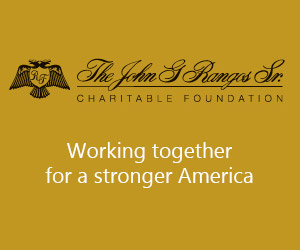- The Brothers Gerazounis: Engineering the Lifeblood of Buildings
- The Hellenic Initiative Summer Youth Academy Empowers Underprivileged Children Through Sports
- CAPTAIN MARIANTHI KASDAGLI: Charting her own course at sea
- Oscar nominee Lorraine Bracco of ‘Goodfellas’ is having ‘More Fun’ than ever before
- Voice And Vision: Grigoris Maninakis, 50 Years Of Greek Music In America
Climbing Mountain Sinai…
by Dean Kalimniou
There is a 12th century icon in the skeuophylakion of St Catherine’s Monastery on Mt Sinai that has always exerted a particular fascination over me. It is the icon of St John Climacos (“the Ladder”) and upon a brilliant golden background it depicts what could be said to be the underlying discourse of Egypt and the Middle East – the archetypal struggle between good and evil. A long black ladder extends to heaven. Bishops and laity ascend it only to be dragged down to earth again by demons. There are many rungs on the ladder of enlightenment and during our lifetimes how we ascend and descend depends on our own care for our spiritual welfare. Beyond the ladder there is only death. Upon the narrow, rickety and precipitous ladder there is a sense of purpose and life.
Everything about Egypt is as dualistic as St John Climacos, and especially its terrain. Beyond the long and narrow strip of cultivated land that is nourished by the Nile and which supports the huge twin metropolis of Cairo-Giza, supporting over 18 million inhabitants, there is only the death and desolation of the desert.

Leaving the fleshpots of Cairo for the desert is therefore a dualistically sorrowful but also cathartic experience. As one delves deeper into the silence of the desert, one is purged of all worldly cares. Rounding the Red Sea and crossing the tunnel that now worms its way under the Suez Canal, one can in four hours replicate Moses’ journey of forty years with an increasing sense of appreciation at the enormity of such an impossible task. The horizon is empty save for the brooding sands, the increasingly rocky terrain and the burnt out remains of the Egyptian tanks, relics of the Suez War when the Israelis finally revenged themselves on the pharaohs and threw the Egyptians beyond the Red Sea.
All of a sudden, the sands hurl out vast mountains and boulders, eroded into innumerable shapes that absorb the all pervasive light and heat of the desert sun. The stone here is all red granite and it can only be likened to photographs of the Martian landscape save that dotted here and there are a few desert oases, signified by the ten or twelve date palm trees that fringe the wretched tents of the totally destitute Bedouin. These Bedouin have a long and glorious history and they exhalt in it. As the 9th century Patriarch of Alexandria Eutychius relates, when the Emperor Justinian decided to found the Monastery of Saint Catherine at the foot of Mount Sinai in the 6th century, he established families from Pontus and Alexandria at Sinai to serve and protect it. They do so still, though they may have lost their language and have outwardly adopted the forms of Islam. These Jebeliya or mountain-dwellers call themselves Romioi just as we do. They practise Christian rites in the safety of their own homes and are utterly devoted to the Monastery, guarding it, serving its needs and recognizing it as the head of their tribes.
Arriving at Saint Catherine’s, as I did one Palm Sunday, is another dualistic experience. The stark world of rock and light is diffused by an unearthly glow. In the semi-darkness, monks chant the same chants and in the same church that has been in continuous use for the past 1,500 years. The hospitable monks of this area once granted refuge to a fugitive Muhammad. As a result, the monastery has remained untouched by the ravages of religious hatred and is the only monastery in the world that houses a mosque, though unused, to commemorate the visit of its ideological enemy and paradoxical protector. The apse of the monastery church is decorated in a fine gold mosaic depicting Christ’s transfiguration. This is one of the earliest Byzantine mosaics to have survived the ravages of time and it did so, by hiding unassumedly for centuries under plaster, until it was uncovered in the nineteenth century. Now it ranks as one of the greatest works of art ever made.

In a room behind the altar covered in gorgeous blue Nicaean faience tiles, a shrine marks the root of the Burning Bush, as seen by Moses. The root extends from inside the shrine and directly outside the church walls, a vast hanging rose bush offering shade to passers by. “This is the Burning Bush,” Father Apostolos tells me. “Nowhere on Mt Sinai can such a bush be found. It is the only one of its kind. A few steps further down you can see the well where Moses met the daughters of Jothor when he fled into the land of Midian.”
Involuntarily I express doubt. Can the Burning Bush have survived and if so, be identified with certainty? Father Apostolos smiles and his emaciated face becomes a ploughed field of wrinkles: “Why is this question relevant? Had you not given up archaeology at university, maybe we could search for the remains of the scientifically proven real burning bush together.” I shudder. How does this desert father, who knows me not from the innumerable stones thrown down from the mountain that strew our path know that indeed I had discontinued studying archaeology in my second year of university? He smiles again. “You know, there is no such thing as silence. At night time, the desert speaks to you.”
The skeuophylakion of Saint Catherine’s is a veritable treasure trove of the ages. In it is housed the oldest surviving copy of the New Testament, the Codex Sinaiticus dating to the fourth century, though the vast majority of the pages were ‘borrowed’ by the German Count Tissendorf in 1865 and never returned. Instead he gave them to the Russian Tsar and they were sold in 1933 by Stalin to the British museum. Glagolithic texts, Greek philosophic treatises and the first printed Greek books are also housed here as well as an eye-absorbing array of fine metalwork, chalices and gospel covers.
Then, out of nowhere, those things that I have traveled so far to see: The almost contemporary Arabic, Armenian and Syriac versions of St John Climacos’ ladder whose dualism seems to have captured the imagination of all, accompanied by illuminations reflecting the original art of each culture. In comparison to the vibrant purples, pinks and Asian looking features of the Arabic manuscript, the original Byzantine icon is somber, almost pensive yet not despondent. Looking at the ladder for a long period of time, one sees the rungs merge into each other and form an escalator, propelling one forward to self-examination.
The icon of Christ Pantokrator should be the last article to be viewed before the attempt to scale Mt Sinai is made. One of the earliest surviving Byzantine icons, it was painted in the now lost encaustic wax technique and it sums up the dualistic experience of Mt Sinai better than anything else. One side of Jesus’ face is compassionate and lovely. This is Jesus Philanthropos, symbolising His nature as Man. The other side of his face is stern and reserved, almost angry. This is Jesus Kritis, the Judge, symbolising His nature as God. There can be no greater man-made expression of the miracle and inexplicability of the dual nature of Christ than this.
The haunting expression of this icon is what I carried with me up what the Arabs call Jebel Musa, the Mountain of Moses. In the beginning, the ascent is easy, almost comical. Picking one’s way through the mountain path, lovingly built of the local stone by the monk Moses, you can easily laugh and be dismissive. “The first rungs of the ladder are always easy,” Father Apostolos had said. “But once you get to the middle and temptation makes you look down, that’s when things get difficult.” By the middle of the way, when the soft incline turns into precipitous steps, the air becomes more rarified and you gasp for a breath, your relaxed attitude is gone.
Instead, as you view the enormity of the mountain that you are still yet to climb you whisper to yourself: “Can I go on?” Slowly, inexorably, you move on, passing fellow climbers who have attempted the climb with enthusiasm and who after falling by the wayside in exhaustion are climbing back down, despondent that they had not the strength to make it to the top.
Two-thirds of the way up, you reach a mountain oasis, surrounded by granite peaks. The silence here is overwhelming and you begin to feel the presence of Something. You sit and rest, reflecting upon your life and of those around you. You could have done better, should you do better?, you will do better.
The sun is beginning to fall low on the horizon and you stand up, dust your pants and realise the temptation of finality has almost thrown you off the mountain. Gasping for air, you reach the peak of the dekalogos, the exact spot where Moses received the Ten Commandments. There is a small, pathetic little church built on the site and as the monks chant vespers you look down around you at the Marscape below, noting how far you have climbed and back towards Cairo, noting how far you have traveled. Then you look up at the sky, sigh that the rungs are no longer visible and make the steady descent down the mountain, before you are enveloped in darkness and the steadily increasing howl of the mountain jackal.











0 comments